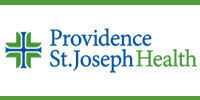Silent Killers: Early Warning Signs Nurses Miss Too Often
One of the hardest parts of nursing is that patients don’t always shout when something’s wrong. Sometimes, the signs are so subtle they slip under the radar — until suddenly, the patient is crashing. These “silent killers” are the ones that haunt nurses the most, because they leave us thinking, “Could I have caught that earlier?”
**The truth is, even experienced RNs miss things. That’s not failure — that’s reality. But by keeping certain red flags on your radar, you can sharpen your instincts and catch problems sooner.
Here are a few early warning signs nurses sometimes overlook — and why they matter.**
⸻
1. Subtle Changes in Mental Status
We’re trained to chart A&O ×4 (alert and oriented to person, place, time, and situation). But orientation isn’t all-or-nothing.
What to watch:
• A patient who suddenly seems “a little off” — confused about the day, hesitating with words, repeating questions.
• New restlessness or irritability, especially in elderly patients.
Why it matters:
These tiny shifts can be the** **first sign of hypoxia, infection, hypoglycemia, or stroke.
I once had a patient who was perfectly stable but suddenly asked, “What year is it again?” Ten minutes later, we were rushing him to CT for a stroke alert.
2. Slight Increases in Respiratory Rate
We often focus on oxygen saturation, but respiratory rate is one of the most sensitive early indicators of decline.
What to watch:
• A steady creep upward (from 16 to 22, for example).
• Rapid, shallow breathing without obvious distress.
Why it matters:
**Early sepsis, pulmonary embolism, and metabolic acidosis often start with increased respiratory rate
long before O2 sats drop.
It’s easy to dismiss as “anxiety” — but it’s worth a second look.**
3. New-Onset Fatigue or “I Just Don’t Feel Right”
How many times have we heard this? Patients say it so often it becomes background noise. But when someone insists they feel “different,” trust your gut.
What to watch:
• Sudden difficulty walking to the bathroom when they managed fine yesterday.
• Extreme sleepiness without explanation.
• Complaints that don’t line up neatly with vital signs.
Why it matters:
Fatigue and malaise can be early flags for** **myocardial infarction, GI bleed, or infection.
⸻
4. Small Skin Changes
Not every bad rash is obvious. Sometimes it’s as small as a cool patch of skin or a faint
discoloration.
What to watch:
• Mottling around the knees, feet, or fingertips.
• Cool extremities when the patient isn’t cold.
• Sudden pale or dusky color.
Why it matters:
Circulatory compromise, shock, or sepsis can show up first in the skin.
⸻
5. Slightly Dropping Blood Pressure (Even Within “Normal”)
It’s easy to see 110/70 and think, “That’s fine.” But if that patient has been running 140/90 all shift, a quiet drop may be the beginning of something bigger.
What to watch:
• Downward trends over several hours.
• Lower pressures combined with rising heart rate.
Why it matters:
Early hypovolemia, sepsis, and internal bleeding often show up as a relative drop, not an immediate crash.**
⸻
6. Subtle Output Changes
We chart I&Os, but sometimes the trend sneaks up on us.
What to watch:
• Urine output less than 30 mL/hr — or a sudden decrease from baseline.
• Dark, concentrated urine.
Why it matters:
Kidney injury, dehydration, or shock may show up in the foley bag before they hit the monitor.
⸻
7. Your Own Gut Feeling
This one’s harder to explain, but every nurse knows it: sometimes you just** ***feel*** **something is wrong.
Why it matters:
**Studies have shown that “nurse worry” is actually a valid predictor of patient deterioration. If you feel uneasy, you’re often right.
I’ll never forget a patient who looked okay on paper, but I couldn’t shake the feeling something was off. I pushed for labs — and his potassium came back dangerously high.**
⸻
Final Thoughts
**The “silent killers” don’t always scream for attention. They whisper. And in the middle of a busy shift, it’s easy to brush those whispers aside. But catching small changes in mental status, subtle respiratory shifts, quiet blood pressure drops, fatigue, skin mottling, urine output changes, or even just trusting your gut can make all the difference.
We won’t catch every warning sign — no nurse can. But the more we share these experiences and keep them on our radar, the better chance we have of recognizing trouble before it explodes into crisis.
Because at the end of the day, the best monitors in the hospital aren’t plugged into the wall. They’re us.**
Calendar




